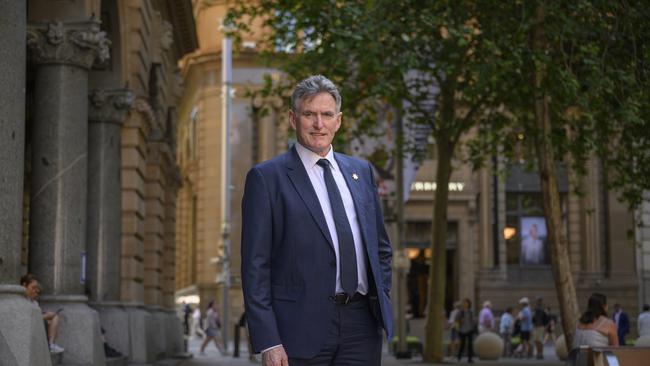NAB remains bullish on home borrowers as mortgage arrears remain muted
Borrowers and homebuyers remain resilient in NAB’s latest set of accounts, with the bank confident many will avoid the worst of the interest rate crunch.
Borrowers are cutting back but not falling behind in National Australia Bank’s latest set of accounts which showed the resilience of the country’s homebuyers in the face of a record setting pace of interest rate rises.
Unveiling a $7.73bn cash profit on Thursday, NAB chief executive Ross McEwan said he was confident borrowers would withstand the higher interest rate environment with the bank still showing arrears and distress lower than pre-pandemic levels.
Mr McEwan said the bank was closely watching certain cohorts of borrowers, including those who took out home loans during the depths of the pandemic, but many were meeting the costs of the higher interest rate environment.
But Mr McEwan noted the impact of higher rates had been uneven, with NAB recording a spike in calls for assistance from borrowers.
Mr McEwan said the bank was seeing many borrowers were setting formal household budgets for the first time, in response to higher rates.
But he said the bank was confident interest rates are near their peak.
“We think we’re getting close to the top end,” he said.
The cash rate has climbed 13 times since May 2022 from 0.1 per cent to 4.35 per cent after the Reserve Bank of Australia again moved to ratchet up borrowing costs on Tuesday.
Mr McEwan said NAB’s loan book was in “really good shape” with loss rates on housing tracking at 0.005 per cent, that’s compared to the 0.01 per cent reported in the same time last year.
NAB reported only 151 properties in possession in September 2023.
Mr McEwan said the recent house price recovery was giving cover to homeowners who wanted to sell their homes before they got deeper into strife.

But NAB, which lends on properties through both its business bank and personal finance arm, reported an increase in loans 90 days past due, climbing to 0.76 per cent of the total loan book, up from 0.73 per cent recorded in the bank’s accounts last September.
Mr McEwan said the higher cost of living was the biggest driver of stress for borrowers.
“This has changed how people are managing their money. Most are maintaining a budget and cutting back on spending,” he said.
“People are serious about controlling their spend and want to be serious about spending their money.”
But NAB reported many borrowers still had financial padding, with average offsets and forward balances continuing to rise and 17 per cent higher than they were in March 2022.
The bank said the average borrower had almost 38 months equivalent in offsets.
Mr McEwan said during the record low interest rates of the pandemic many of NAB’s borrowers had continued to pay more than their minimum mortgage payments.
“There are many customers out there really hurting,” he said.
“I think they’re in a better position than many give them credit for.”








To join the conversation, please log in. Don't have an account? Register
Join the conversation, you are commenting as Logout